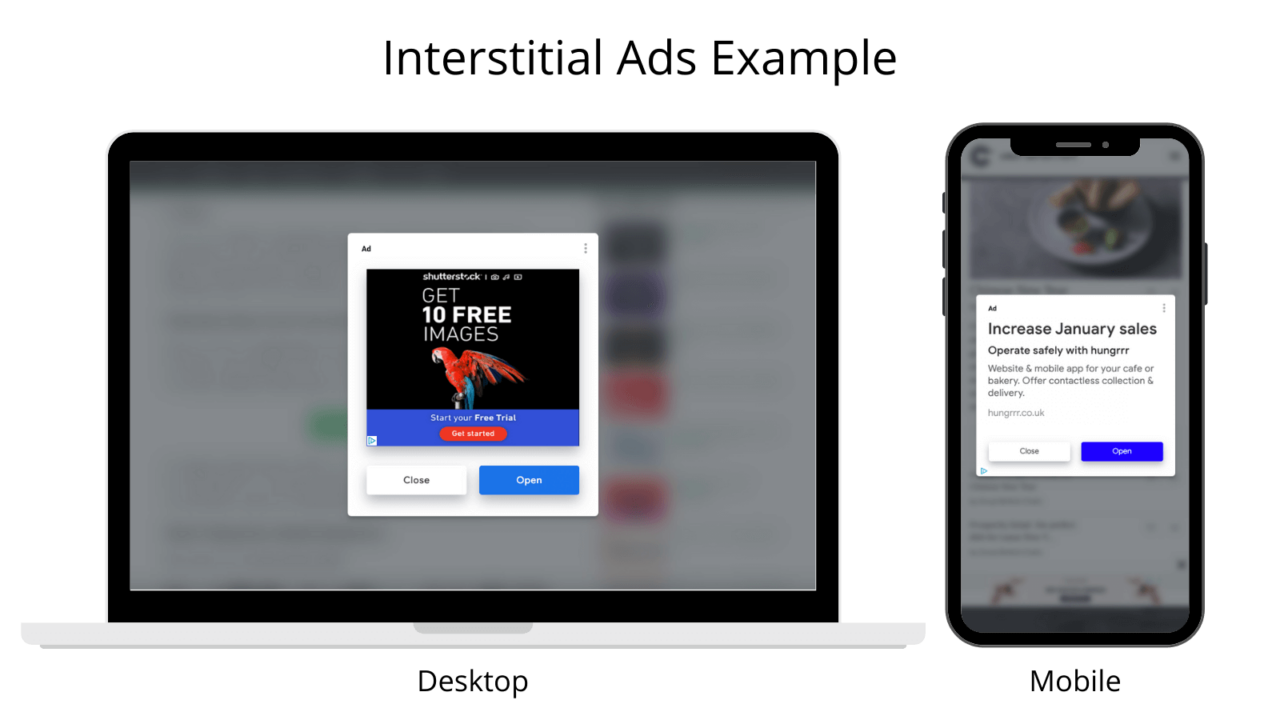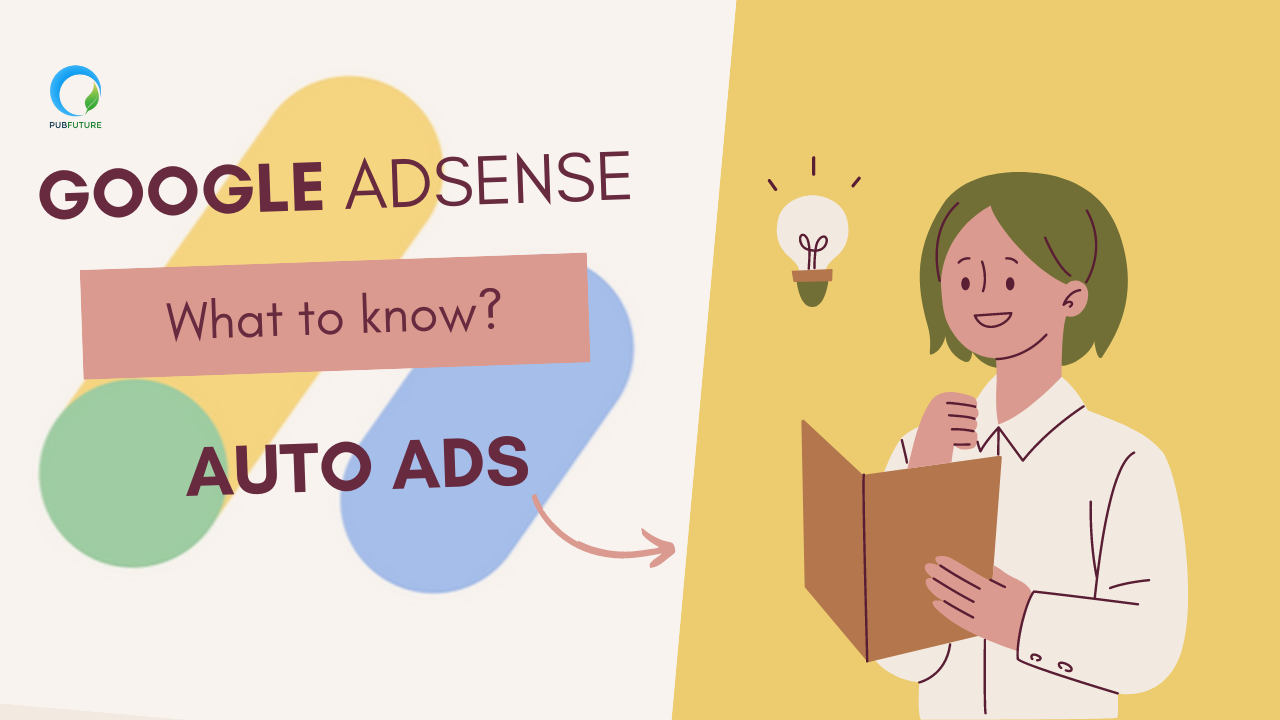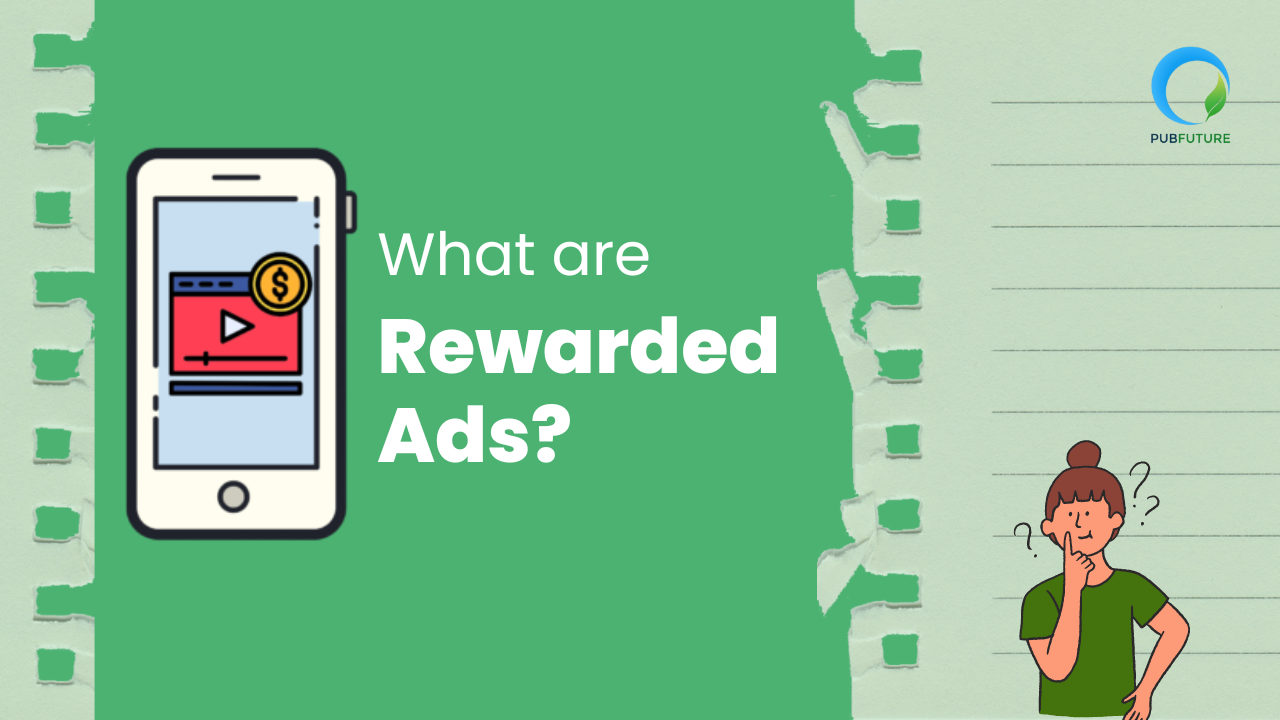Interstitial ads are an effective way to draw attention and advertise goods and services.
What is an Interstitial Ad?
Interstitial ads are full–screen ads that cover the entire display screen of a user. These ads work most effectively when appearing during natural transition points or breaks.

Interstitial ads can be of different types: text, image and video. The interstitial ads full coverage attribute makes them different from other ad formats such as pop-up, native, and banner ads.
Interstitial ads: How do they work?
Interstitials appear between organic transitions in a website or mobile application. Users can choose not to engage with static interstitial advertising by closing them. In contrast, video interstitials require the user to watch the commercial for a predetermined amount of time before the cross-choice displays. The duration of the advertisement varies depending on where it is displayed, ranging from five seconds to one to two minutes.
What are the Types of Interstitial Ads?
- Full-screen interstitial advertising: span the entire screen while the user is browsing a website, making them impossible to ignore. They primarily occur during organic transitions to make the ads less intrusive
- Video interstitial advertising: use videos to advertise messages. They’re frequent on YouTube, travel, and gaming websites
- Mobile interstitials (made specifically for mobile devices): typically appear during natural transitions while using mobile applications
- Interactive interstitials: are designed to enhance user participation and engagement while also collecting data for advertising purposes. They are typically in the form of short surveys
- Exit intent interstitials: are pop-ups that appear when a visitor is about to depart a website. E-commerce websites have completely utilised to boost conversion rates. These appear when a user leaves their cart without finishing the purchase. The goal is to provide last-minute discounts to complete the payment or to make enticing offers to increase sales.
Advantages of Interstitial Ads for Publishers
Pinterest and Airbnb reported 120% and 300% increases in app installation after optimising interstitial advertising, respectively. As a result, most publishers include interstitial advertising in their ad inventory, knowing that marketers and advertisers are willing to pay a premium for them.
High Revenue
Interstitial advertisements are more likely to attract people’s attention, even though they could be viewed as more obtrusive than other forms of advertisements. So that advertisers value them more and are prepared to pay publishers more to have the opportunity to reach potential consumers.
High click-through rate (CTRs)

Interstitial ads are unavoidable and provide viewers only two options: click the ad or click the exit button. As a result, click-through rates (CTRs) on these ads tend to be high, making them a lucrative source of ad inventory for publishers.
Eliminates banner blindness
Interstitial advertising prevents banner ad blindness because they fill the entire screen. These also have the potential to enhance views and engagement because they are not blocked by ad blockers.
Interstitial Ads Are Comprehensive
There are no limitations on what you can promote with an interstitial ad; it can be anything. Creating rich media advertisements that combine text, graphics, and video is uncomplicated.
How to Optimize Interstitial Ads?
Avoiding Disturbing Users when Working on Important Tasks
Getting interrupted is something that nobody enjoys. This also applies to advertisements, particularly when completing a task like filling out a form.

Therefore, it is best to prevent interstitial advertisements in between significant user activities or interactions. Nonetheless, ensure that the running process is halted while the user sees the advertisement if the task is deemed insignificant and you wish to display an advertisement there.
Giving The Interstitial Ads Enough Time To Load
Large-format ads with vibrant graphics and rich media are known as interstitials. It will require some time for the user’s screen to load this.

Therefore, ensure that the advertisement is rendered promptly to prevent such issues. Better still, begin loading your advertisement prior to the call. It won’t take long to exhibit when the time arrives.
Avoiding Overcrowding Users’ Screens with Interstitial Ads
This works for all kinds of ads. In the case of interstitial ads, which cover the entire screen, showing many ads in a short time interval is most likely going to degrade their user experience and eventually lead to a lower CTR.
See more: The Power of Frequency Capping: Enhancing Digital Advertising Performance
Make Sure Interstitial Ads Are Right For You
It seems like an effective strategy to employ interstitial advertising to get user impressions. But be sure these advertisements are appropriate for you before putting them up on your platform.
Interstitial advertisements function ideally when positioned in between transition points, when a user expects a break. During this, the user might take a look at the ads and click on them. We should determine the perfect time and place for interstitial ads.
Planning to Use Interstitial Ads?
According to a survey, over 20% of users instantly search for the close button when an interstitial ad pops up on their screens. Nevertheless, after seeing interstitial advertising, 42% of users recall the advertisement and its offer. Thus, timing and relevancy are crucial for interstitial advertisements.
If you are starting out with interstitial ads but don’t know much about them, PubFuture provides a comprehensive directory that can support you and boost your ad revenue. Wanna see how it performs? Try now by signing an account with PubFuture!









